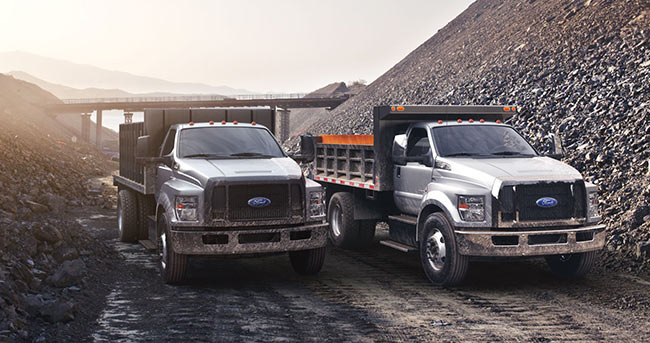Ford’s electric-vehicle business lost nearly $4.7 billion in 2023 and could lose another $5 billion this year, but CEO Jim Farley argues the automaker is undervalued given the performance of the company’s commercial-vehicles business, Ford Pro, which has emerged as a dominant force and harbinger of future growth.
“Our underlying business is getting better,” Farley insists during a conference call with analysts after the company releases its year-end financial report.
“Despite the UAW strike, our auto profits were up year-over-year. We returned to investment grade, we have higher ROIC (return on invested capital) and we have really solid conversion from profits to cash,” he says.
“We’re returning capital to shareholders, we’re declaring a regular and a special dividend and we’re getting much more disciplined on capital – not just where we allocate, but more importantly, how much we spend and when.”
During the conference call, Farley says Ford Pro is not getting the respect it deserves from the investment community, even though it is a $60 billion high-margin hardware, software and physical services business and most of the revenue is recurring.
Ford Pro doubled its EBIT to $7 billion despite a significant slowdown on Super Duty (pickups) during the launch to ensure vehicle quality and is now on track to yield EBIT margins in the “mid-teens” this year.
“We don't just lead in (Ford) Pro, we dominate,” Farley says. “We’re 40% of the market share of Class 1 through 7 fullsized trucks (pictured, below) and vans. In fact, (in) many months our second-place competitor isn’t even half our size. Now commercial – commanding that share means that we are dominant in vocations like service construction, utility and…government.

“Dealers are clamoring for more Pro allocation,” Farley adds. “Dealers normally get only 50% to 75% of the volume they want and the capacity constraints could grow if the housing market rebounds.”
Farley also says Ford is quickly developing plans for meeting the challenges created by the costly transition to battery-electric vehicles. The automaker has a special “skunk works” R&D operation working on a low-cost BEV, he says.
“Our overall EV strategy has never been more relevant as the seismic change (to BEVs) happens, and we want to share with you our targets,” the CEO says. “Our next Gen 2 products scheduled to appear in 2025 will be profitable in the first 12 months of their launch. And that will mean that we’ll get to mid- to high-single-digit EBIT profit margins over their lifecycle, and that's going to deliver profits above Model e’s cost of capital.”
Losses by Ford Model e, the automaker’s electric-vehicle business, could top $5 billion this year, company executives acknowledge.
John Lawler, Ford chief financial officer, says the company’s 2023 revenues grew 11% to $176 billion, marking Ford’s second consecutive year of double-digit growth. Net income improved year-over-year to $4.3 billion.
“We delivered $10.4 billion in adjusted EBIT, at the high end of our guidance, driven by continued strength in both (Ford) Blue (the automaker’s dedicated internal-combustion-engine and hybrid business) and Pro,” Lawler says. “Compared to last year collectively, our core business units, Pro, Model e and Blue grew, improved EBIT by $2 billion or 26% – and this is after fully absorbing the roughly $1.7 billion impact of the UAW strike.”
During the fourth quarter, revenue for Ford Blue was flat despite the loss of roughly 60,000 units due to the strike. EBIT was $113 million with a margin of 3.1%.
“EVs are here to stay,” Lawler says, noting Ford Model e’s wholesales and revenue were both up at double-digit full-year rates. Model e incurred a full-year EBIT loss of $4.7 billion, reflecting an extremely competitive pricing environment, along with strategic investments in the development of clean-sheet, next-generation EVs.





